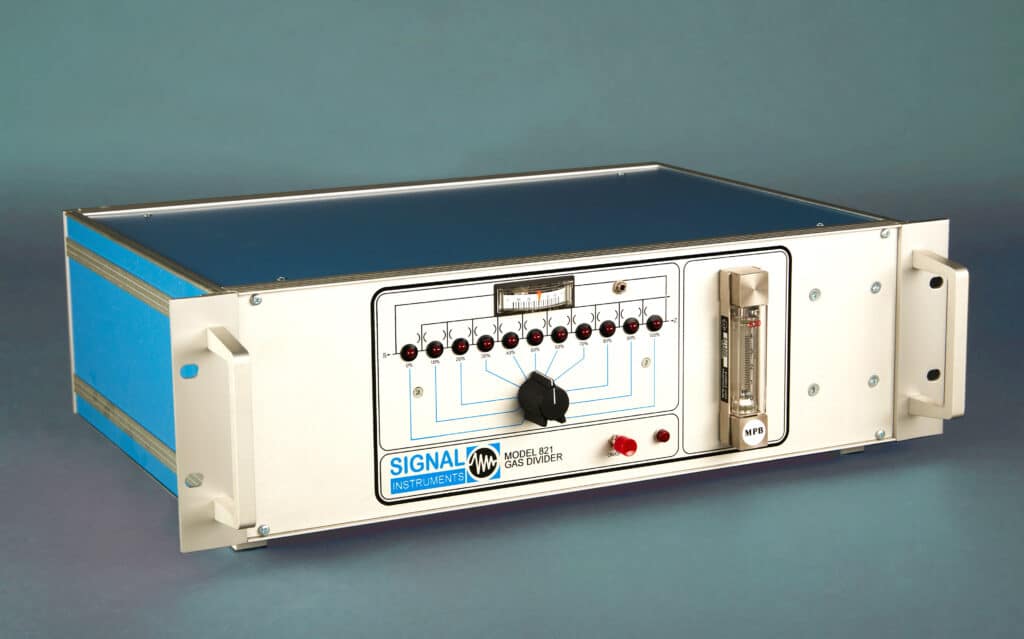Levels of uncertainty in gas measurements can be increased, for example, by calibration gases that offer poor levels of accuracy. For this reason, Signal Group manufactures gas handling and calibration equipment as well as gas analysers. “The linearity check is particularly important,” explains Managing Director James Clements. “Our Model 821S Gas Divider, for example, has been tested independently against our main competitor globally, and found to be dramatically superior.”
Conducted in North Carolina, USA, the trial found the slope accuracy for the Signal 821S to be just 0.25% for a NO/N2 gas mixture, whereas the competitor gas divider offered 1.6% slope accuracy. Similarly, for a SO2/N2 mixture Signal’s slope accuracy was 0.74% and the competitor’s was a disappointing 2.5%.
“Sources of uncertainty are incremental,” James explains, “so it makes no sense to introduce extra error unnecessarily, which is why the 821S Gas Divider is popular with both our customers and with other gas analyser manufacturers.”

The European standard EN14181 describes the quality assurance procedures for Automated Measurement Systems (AMS) installed to measure emissions to air. Under this standard, an analyser’s linearity must be checked using five different reference concentrations, including zero. The reference concentrations should be approximately 20%, 40%, 60% and 80% of the range of two times the emission limit, and the test concentrations should be applied in a randomised sequence.
It is common practice to employ a gas divider to create the different reference concentrations, however, it is of course also necessary to be able to validate the gas divider. To protect accuracy and reliability, the Signal Group Model 821S Gas Divider does not use mass flow controllers. A manifold block with ten identical capillaries and a precision pressure balance regulator ensure the high levels of accuracy demonstrated in the USA trial.
The procedure for checking the accuracy of the 821S Gas Divider is simple. Users connect the zero and calibration gas to the opposite connections and repeat the test, and if the gas divider is operating correctly, the gas analyser will show exactly the same readings.
Summarising, James Clements says: “Bottles of calibration gas have a fixed ‘use-by’ date and can be expensive to purchase and store, so it makes sense to employ a gas divider to conduct multi-point calibrations. However, purchased calibration gas itself incurs a level of uncertainty, so we designed the 821S Gas Divider to minimise increases in uncertainty, and I am grateful to the researchers in North Carolina for highlighting this technical superiority.”

